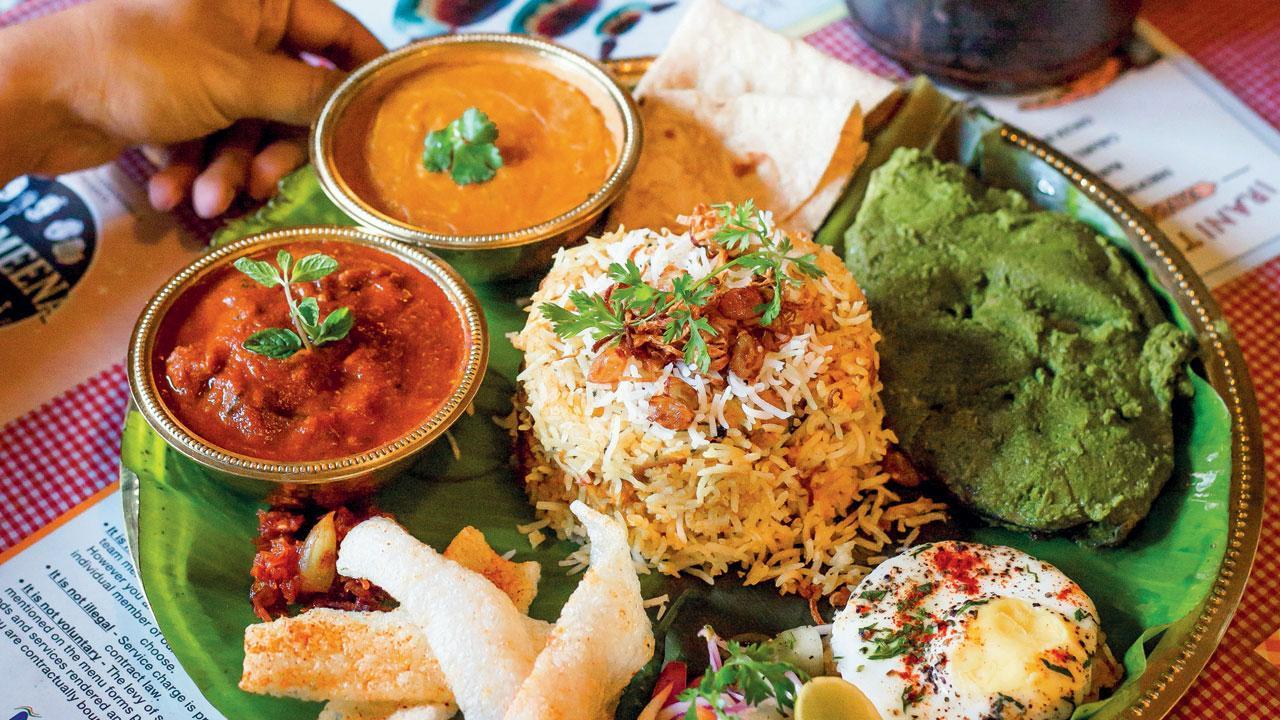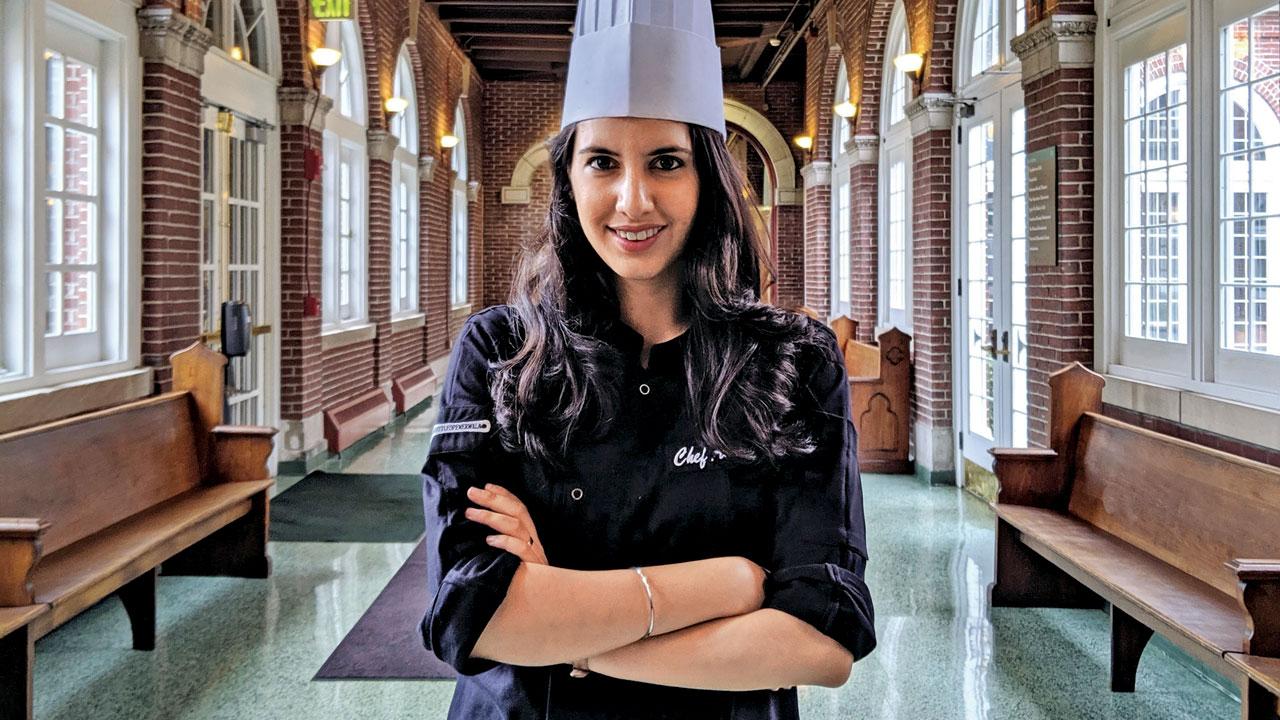SodaBottleOpenerWala’s chef Anahita Dhondy dips into recipes from her Parsi home to pen a memoir about food and family

Lagan Nu Bhonu
In chef Anahita Dhondy’s Parsi household food is not just food, but memories seeped in nostalgia. Sometimes it is the pork vindaloo—a legacy handed down from generations of Goan cooks working in Parsi homes—that becomes a cure for Dhondy’s homesickness while studying at Le Cordon Bleu (LCB) in London; at other times, it is a way for her to reconnect with her grandparents, and the many “mango summers” she spent with them. Her new book, The Parsi Kitchen: A memoir of food and family (HarperCollins India), is Dhondy’s attempt to shed light on her culinary heritage, and what inspired the former chef-partner at SodaBottleOpenerWala to make the kitchen her happy place.
ADVERTISEMENT
Dhondy says she had been thinking of writing this book for nearly five years now, because she wanted to “preserve the family recipes” she had learnt during her journey as chef—many of which, like the fluffy ravo and pheteli coffee, also found a way into the menu she curated at SodaBottleOpenerWala. “But I didn’t want it to just be another recipe book. For me recipes always have stories attached to them; I wanted to encapsulate that,” shares Dhondy, in a telephone interview. By creating a visual portrait of her family and the meals they relished together, she was also hoping to provide insight into the Parsi community, their culture and everyday life.

Anahita Dhondy
Though Dhondy was dipping into family histories and photographs for her book, she admits being consciously aware of the fact that these were “real stories” that she was writing down and preserving for posterity. Memories of people, she says, are often subjective and personal. “So, during the course of the interviews and conversations with family members, I had to also do my own research to ensure that I didn’t get any of the facts wrong.”
That she was telling the story through an assortment of Parsi dishes, meant that she had to also figure out how to make the connections. That took time, she confesses. Take the kairi chicken recipe, for instance. Dhondy tells us about her paternal grandfather, Dinyar Dhondy, who was known for his “mango philanthropy”. During the mango season, he placed a vessel with ice and mangoes outside his house for anyone passing by to take a mango from and eat. Her fondest memories are of the summer holidays that she and her brother Kurush, spent with dada Dinyar and grandmother Meher in Allahabad.
Mangoes would be the highlight of their stay. “Ice cream, milkshake, kairi chicken… We had a lot of ‘mango jam’—literally just mango and sugar—for breakfast,” she writes. There’s also the delicious Parsi breakfast, akuri, a creamy scrambled egg, which is prepared differently by three generations of her family. The actual technique for preparing akuri, she shares in the book, is to fry the masala (onions, tomatoes, ginger-garlic paste and spices) and then turn the gas off before adding the egg—the pan has enough heat for the egg to cook. That’s how Dhondy’s mom Nilufer, who she says is also an excellent cook, makes it. Dhondy, on the other hand, adds the egg and cooks it a little before turning the gas off. She also adds half a teaspoon of butter into the akuri mixture and tops it with chopped dhaniya. Her nani, Vera Ghandhi’s akuri is a “little more solid, like a bhurji”. “My mum is a stickler. For her, dishes need to be prepared the way they have been made traditionally. She is very particular about that. But, I am quite experimental. I think all of us [in the family] bring something different to these recipes, and we respect it, because it comes from a place of experience,” she says. For the book, she says, she chose to go with the traditional recipes. “Where there was scope for making variations, or including substitutes, I have mentioned that in the book as well. Now that many are talking about sustainable, plant forward diets, I did suggest alternatives. Like, you can make a patio without prawn and add kaddu [pumpkin] or baingan [eggplant]. In fact, even I prefer a vegetarian patio.”
One of her favourite food memories, says Dhondy, is associated with her dad Navroze, who makes a delicious tea blend with mint leaves and lemongrass. “He loves his tea, and he gets that from his mother [my grandmother]. Morning and evening chai is such an important ritual in our family even today. And we enjoy it with cookies or home-made bhakra. [Now that I am married and away from home], each time I have my tea, dad is someone I think of.”
Vera’s Ravo
Preparation time 30 mins serves 4

Ingredients
1 cup granulated sugar
4-5 tbsp ghee
1 cup suji
4 cups full-cream milk
1 tbsp rose water (optional)
1 tsp vanilla essence
For garnish
1/4 cup each of chironji seeds, almond flakes, cashewnuts, raisins, tossed in ghee
Method
In a pan, add milk and sugar. Warm the milk just till the sugar dissolves. In another pan, heat the ghee and then add the suji. Slowly roast till it becomes a light almond colour. Slowly pour the hot milk over the suji. Keep stirring till it thickens and you can see small bubbles. Make sure the milk is hot or there will be lumps in the ravo. Add the rose water and vanilla essence. Once the ravo thickens, pour it into dessert bowls and let it cool. (I usually do one big bowl which gets polished off very quickly!) Garnish with dry fruits. Serve cold or warm, directly from the pan (which is how Arush [Dhondy’s husband] likes it).
 Subscribe today by clicking the link and stay updated with the latest news!" Click here!
Subscribe today by clicking the link and stay updated with the latest news!" Click here!










